Sitting for extended periods of time puts a high amount of compressive force into your spine. This tension mostly resides in the lumbar spine, or lower back, but can also affect the thoracic spine, or middle back. The middle back does a lot of rotational motions, such as twisting to reach for a seat belt. If there is tightness or stiffness in the thoracic spine, there will likely be increased discomfort and reduced function. Here are three tips on daily motions to promote thoracic mobility:
Laying on one’s side with the knees together and bent. Extend both arms in front at shoulder height. Peel apart the arms so the top arm touches the floor opposite the starting side. Try to keep the hips and knees still. A stretch will be felt at the chest and upper back. Do both sides.
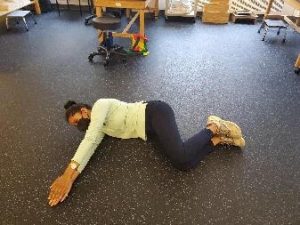

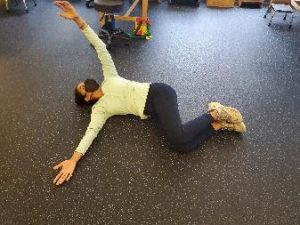
In quadruped, on hands and knees, start with the spine at neutral. Take in a deep breath and curve the middle back upwards while tucking in the pelvis to make an arch with the spine. Breath out slowly and sink into the arch, by looking up to the ceiling and dropping the spine downwards.
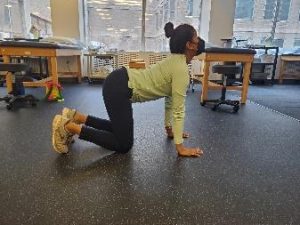
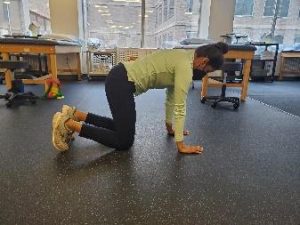

Place the foam roller on the ground horizontally. Lay with the middle back across the foam roller. Place both hands, if comfortable, behind the head and keep the elbows wide. Lift up the hips and use your legs to slowly roll up and down the foam roller. Let the head relax fully into the hands while rolling.
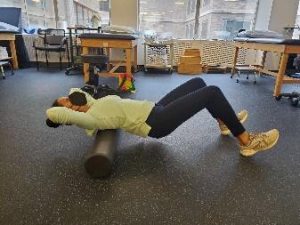


Thoracic mobility after a long day of sitting will be beneficial for the whole back and for shoulder movement. With these movements, people may hear popping or cracking of the spine. With a release of motion and no symptoms of discomfort, this will help to return mobility into the thoracic spine. If there is a history of cervical or lumbar spine surgeries or dysfunction, it is important to contact the physical therapist for proper modifications and assessment of the dysfunction.
If you’re suffering from back pain or an injury and are in need of physical therapy, contact us online today. We provide physical therapy at several clinic locations across Maryland, Washington DC and Virginia. Our physical therapists stand ready to help you get your life back on track.